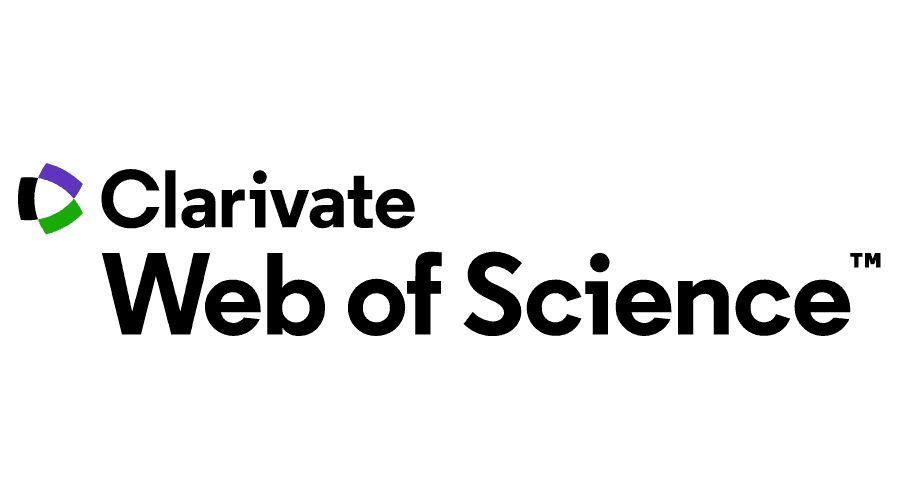COMPARATIVE PHYTOCHEMICAL ANALYSIS OF FOUR COMMON HERBS USED TRADITIONALLY IN THE TREATMENT OF ALIMENTS AT UKANA UWA IN ESSIEN UDIM LOCAL GOVERNMENT AREA OF AKWA IBOM STATE
DOI:
https://doi.org/10.60787/apjcasr.Vol9No1.50Keywords:
Musa, components, Paradisiaca, leaf, dried, PhytochemicalsAbstract
The results obtained in four different herbsused in the treatment of various ailments were showed and the presence of phytochemicals in various plant leaves with their calculated concentrations in 100 mg/100. Using standard analytical procedure, it was revealed that in Lanneaacida leaf, saponnins was the highest with 27.25 +0.354, followed by 12.75 + 1.061, the content of tannins was 9.40 + 0.568, while cyanogenic glycoside content was 4.15 + 0.138 and the least was flavonoid with the lowest concentration of 0.09 + 0.412 respectively. Then in Setariamegaphylla concentration were as follow; the highest concentration in flavonoids with 19.55 + 0.283, saponins 5.82 + 0.262, alkaloids 4.65 + 0.283 and tannin 3.63 + 0.325 while cyanogenic glycoside was 2.72 + 0.163. That of Aloe vera leaf with the highest were alkaloid with 12.40 + 1.230, saponin 8.20 + 0.460, flavonoids 5.60 + 0.620 and tannin with 4.20 + 0.250 while cyanogenicglycoside was Nil.
The last plant that undergo the analysis also showed that flavonoids has the highest concentration with 26.75 + 0.354, followed by saponins 15.75 + 0.136, cyanogenic glycoside 5.32 + 0.253 while tannins was 3.077 + 0.186 while alkaloid content were 2.75 + 0.354 which was the lowest respectively. When comparing the results obtained in all the plants to the WHO standard or Daily allow dietary. There all fail within the recommendation and can be allow to be used for treatment because their toxicity to human’s body are below the required standard. As such there can be used and other comprehensive research should be carried out to know the microbial status.
References
Adamu, V. N. and Dixct, V. K. (2008). Recent approaches in herbal drug standardization. International Journal of Integrative Biology, 2(3): 195-203.
Ahasan, H. Ahad, A., &Siddiqui, W.A. (2015).A review of characterization of tocotrienols from plant oil and foods.Journal of Chemical Biology, 8(2), 45-59.
Akobundu, I. O. and Agyakwa. C. W. (2002).A Handbook of WestAfrica Weeds. (2nd ed). International institute of TropicalAgriculture, Ibadan, 6(4), 418-420.
Alvarez, E., Leiro, J. M., Rodrıguez. M. and Orallo, F. (2004). Inhibitory effects of leaf extracts of Stachytarphetajamaicensis (Verbenaceae) on the respiratory burst of rat macropihages, Phytotherapy Research, 18 (6): 457-462.
Anderson, K. J., Euber, S. S., Gobeille, A., Cremin, P., Waterhouse, A L. and Steinberg, F. M. (2001). Walnut polyphenolics inhibit in vitro human plasma and LDL oxidation. J. Nutr. 131, 2837-2842
Avoseh, O., Oyedeji, O., Rungpu, P., Nkeh-Chungag, B. and Oyedeji.A. (2015).Cymbopogon species; Eihopharmacolg, Phytochemistry and the Pharmacological Importance.Molecules, 20,7438-7453.
Awoyinika, O. A., Balogun, I. O. and Ogunnowo, A. A. (2007). Phytochemical screening and in-vitro bioactivity of Cnidoscolusaconitifolius (Euphorbiaceae). Journal of Medicinal Plants Research, 1, 063-065.
Ayoola, G. A., Coker HA, Adesegun SA, Adepoju-Bello AA, Obaweva K. (2008) Phytochemical screening and antioxidant activities of some selected medicinal plants used for malarie therapy in Southwestern Nigeria. Trop Journal of Pharmaceutic Resource 7:1019-1024.
Balkau, B., Charles, M. A. and Eschwege, E. (2000). Discussion of epidemiological des nouveaxCreters du diabetes M. Endocrinologic, 2: 229-234.
Bieri, J. G., Everts, R. P. and Evarts, K. (2004). Tocopherol: metabolism, biological activity and significance in human vitamin E nutrition. American Journal of Ciinical Nutrition, 27(9), 980-986.
Boham. A. B. and Kocipai. A. C. (1994). Flavonoids and condensed tcnnins from leaves of Hawaiiamvaccinanium. Pacific. Science, 48: 458-463.
Bolander, F.F. (2006). Vitamins: not just for enzymes". CurrOpin Investing Drugs, 7 (10), 912-5.
Boudreau, U., Steenkamp, D. and Stewart, J. (2013). Thermal processing enhances the nutritional value of tomatoes by increasing total antioxidant activity". Journal of Agricultural and Food Chemistry. 50 (10): 3010-4
Brasileiro, B. G., Pizziolo, V. R., kRaslan, D. S., Jamal, C, M and Silveira, D. (2006). Antimicrobial and cytotoxic activities screening of sonIe Brazilian medicinal plants used in Governador Valadares district. RevistaBrasileira de CienciasFarmaceuticas, 42 (2): 195-202.
Burkill, H. M. (1985). Entry for Setariamegaphylla (Steud). Dur. & Schinz (family POACEAE). In: The useful plants of west tropical Africa, 26 Edition. Royal Botanic Gardens, Kew.Uk. P. 53.
Cai, U. Z. and Sun, M. (2003). Antioxidant activity of betalins from plants of the Amaranthacea. International Journal of Agriculture and Food Chemical, 57: 222-2294.
Chen, T. W., Shich, P., Kuo, D, and Hsieh, C. (2006). Evaluation of the antíoxidant activity of Ruellia tuberose. Food Chemistry. 94: 14-18.
Choe, E. Min, D., David, B. (2009). Mechanisms of antioxidants in the oxidation of foods. Comprehensive Review. Food Science and Food Safety, 8(4), 345-358.
Cowau. M. M. (1999). Plant products as anti-microbial agents Clinical Microbiology Reviews, 12, 564-582.
Dietary Reference Intake (DFI) (2001). Value represents suggested intake without adequate sunlight exposure. The National Academics, p. 71.
Dong, T. T. X., Zhao, K. J. Huang., WZ.. Leung. K. W. and Tsim, K. W. K., (2005). Orthogonal Array Design in Optimizing the Extraction Efficiency of Active constituents from Roots of Panaxnotoginseng. Journal of Phytotherapy research, 19, 684-688.
Duster.G. (2008). Retinoic acid synthesis and signaling during early organogensis. Cell, 134 (6), 921-93 1.
Femenia., (2009). Antimicrobial activity of Aloe vera (L.) Burm.f. against pathogenic microorganisms. Journal Bio sci. Res, 1(4): 251-258
Fennemna, O. (2008). Fennema's Food Chemistry. Country: Press Taylor and Francis, Pp. 454-455.
Fortmann, S. P. Burda, D. U., Senger, C. A., Lin, J. S. and Whitlock. E. P. (2013). Vitamin and Mineral Supplements in the primary prevention of cardiovascular disease and cancer: An updated systematic evidence review for the e U.S. Preventive Services Task Force. Aannals of Internal Medicine, 159(12), 824-83.
Grover, N. and Patni, V. (2013). Phytochemical characterization using various solvent extracts and GC-MS analysis of methanolicextract of Wood fordiafruticosa (L) Kurz. Leaves. International Journal of Pharma, Parmaceutic Science 5: 291-295.
Grupta, A. (2011). The Essential Guide to Nutrient Requirements, published by the Institute of Medicine's Food and Nutrition Board, currently available online at "Archived copy". Archived from the original on 2014-07-05
Halliwell. B. and Gutteridge, J. M. C. (2007). Free Radicals in Biology and medicine. Clarendon Press, 4th edition.
Harborne.J.B. (1973). Phyto chemical methods. London: Chapan and Hal!. Pp. 52-114.
Hwang, E. (2013). Prebiotic digestion and fermentation. The American Jouurnal of Clinical Nutrition. 73 (2 Suppl): 415-420
Idu, M., Omogbai E. K. I., Aghimien, G. E., Amaechina, F., Timothy. O. and Omonigho, S. E. (2007). Preliminary phytochemistry antimicrobial properties and acute toxicity of Stachytarphetoigmaicensis (L.) Vahl. leaves," Trends in Medical Research. 2 (4): 193-198.
Joseph, I. and Raj, R. (2010). Phyto-chemical analysis and antimicrobial evaluation of Aloe vera gel against some human and plant pathogens. Asian Journal of Current Chemistry; 1(1): 1-1l1,
Joshi, V., Sutar. P., Karigar, A., Patil, S., Gopalakrishna, B. and Surehan, R. (2010). Screening of ethanolic extract of Stachylarphetaindica L. (vahl) leaves for hepaloprotective activity," International Journal of Research in Ayurveda and Pharmacy, 1 (1): 174-179.
Kuzuya, E., Arunkumar, S. and Muthuselvam, M. (2004) Analysis of Phytochemical Constituents and Antimicrobial Activities of Aloe vera L. against clinical pathogens. World Journal of Agricultural Sciences; 5(5): 572-576.
Pemberton, J. (2006). Medical environment carried out in Sheffield on Conscientious objectives it military service during the 1939-45 war. International Journal of Epidemiology, 33(3), 556-558.
World Health Organization, (1996). Agency: Recommended Dietary Allowance in various food samples in: International Journal of Food Science and Pharmaceuticals Technology. Pp. 70-74.
Downloads
Published
Issue
Section
License
Copyright (c) 2024 Akwapoly Journal of Communication & Scientific Research

This work is licensed under a Creative Commons Attribution-NonCommercial-NoDerivatives 4.0 International License.








